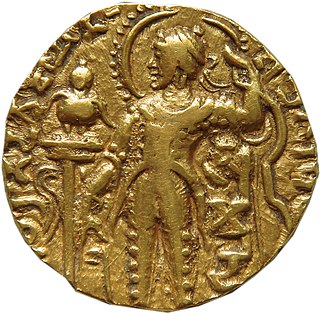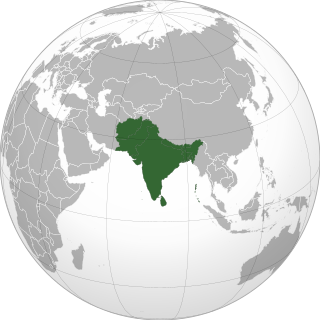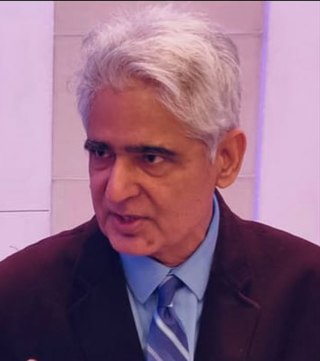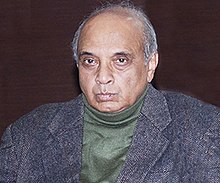Indraprastha is mentioned in ancient Indian literature as a city of the Kuru Kingdom. It was the capital of the kingdom led by the Pandavas mentioned in Mahabharata. Under the Pali form of its name, Indapatta, it is also mentioned in Buddhist texts as the capital of the Kuru mahajanapada. Modern historical research pin its location in the region of present-day New Delhi, particularly the Old Fort. The city is sometimes also known as Khandavaprastha or Khandava Forest, the name of a forest region on the banks of Yamuna river which had been cleared by Krishna and Arjuna to build the city.

The history of metallurgy in the Indian subcontinent began prior to the 3rd millennium BCE. Metals and related concepts were mentioned in various early Vedic age texts. The Rigveda already uses the Sanskrit term ayas. The Indian cultural and commercial contacts with the Near East and the Greco-Roman world enabled an exchange of metallurgic sciences. The advent of the Mughals further improved the established tradition of metallurgy and metal working in India. During the period of British rule in India, the metalworking industry in India stagnated due to various colonial policies, though efforts by industrialists led to the industry's revival during the 19th century.

The Painted Grey Ware culture (PGW) is an Iron Age Indo-Aryan culture of the western Gangetic plain and the Ghaggar-Hakra valley in the Indian subcontinent, conventionally dated c.1200 to 600–500 BCE, or from 1300 to 500–300 BCE It is a successor of the Cemetery H culture and Black and red ware culture (BRW) within this region, and contemporary with the continuation of the BRW culture in the eastern Gangetic plain and Central India.

Braj Basi Lal was an Indian writer and archaeologist. He was the Director General of the Archaeological Survey of India (ASI) from 1968 to 1972 and has served as Director of the Indian Institute of Advanced Studies, Shimla. Lal also served on various UNESCO committees.

Pushkalavati or Pushkaravati, and later Shaikhan Dheri, was the capital of the ancient region of Gāndhāra, situated in present day's Pakistan. Its ruins are located on the outskirts of the modern city of Charsadda, in Charsadda District, in the Khyber Pakhtunkhwa, 28 kilometres northeast of Peshawar. Its ruins are located on the banks of Swat River, near its junction with Kabul River, with the earliest archaeological remains from 1400 to 800 BCE in Bala Hisar mound. Pushkalavati became an Achaemenid regional capital around 600 BCE, and it remained an important city through to the 2nd century CE.

In the prehistory of the Indian subcontinent, the Iron Age succeeded Bronze Age India and partly corresponds with the megalithic cultures of India. Other Iron Age archaeological cultures of India were the Painted Grey Ware culture and the Northern Black Polished Ware. This corresponds to the transition of the Janapadas or principalities of the Vedic period to the sixteen Mahajanapadas or region-states of the early historic period, culminating in the emergence of the Maurya Empire towards the end of the period.

D. P. Agrawal is a historian of Indian science and technology, archaeologist, and author. He has published works on Indian archaeology, metallurgy, the history of science, and palaeoclimate.
Vibha Tripathi is an Indian archaeologist. She graduated from the University of Allahabad and in 1973 obtained her PhD from the Banaras Hindu University for her thesis titled "The Painted Grey Ware - A Protohistoric Culture". She has worked in the field of Proto-historic and Early-Historic Archaeology and Archaeometallurgy and has published around more than 200 research papers. As of 2019, she is a Professor Emeritus at the Department of Ancient History and Archaeology, Banaras Hindu University.

Ram Sharan Sharma was an Indian Marxist historian and Indologist who specialised in the history of Ancient and early Medieval India. He taught at Patna University and Delhi University (1973–85) and was visiting faculty at University of Toronto (1965–1966). He also was a senior fellow at the School of Oriental and African Studies, University of London. He was a University Grants Commission National Fellow (1958–81) and the president of Indian History Congress in 1975. It was during his tenure as the dean of Delhi University's History Department that major expansion of the department took place in the 1970s. The creation of most of the positions in the department were the results of his efforts. He was the founding Chairman of the Indian Council of Historical Research (ICHR) and a historian of international repute.
Prof Haroon Khan Sherwani (1891–1980) was an Indian historian, scholar, and author. Maulana Azad National Urdu University had created Centre for Deccan Studies in his honor.

Samataṭa was an ancient geopolitical division of Bengal in the eastern Indian subcontinent. The Greco-Roman account of Sounagoura is linked to the kingdom of Samatata. Its territory corresponded to much of present-day eastern Bangladesh and parts of the Rakhine State of Myanmar. The area covers the trans-Meghna part of the Bengal delta. It was a center of Buddhist civilisation before the resurgence of Hinduism and Muslim conquest in the region.

The Bhir Mound is an archaeological site in Taxila in the Punjab province of Pakistan. It contains some of the oldest ruins of Ancient Taxila, dated to sometime around the period 800–525 BC as its earliest layers bear "grooved" Red Burnished Ware, the Bhir Mound, along with several other nearby excavations, form part of the Ruins of Taxila – inscribed as a UNESCO World Heritage Site in 1980.
Munshiram Manoharlal Publishers Pvt. Ltd. (MRML) is a leading publishing house located in New Delhi, India. Established in 1952 by Manohar Lal Jain, it is one of the oldest publishing houses in India.

This is a bibliography of notable works about India.

Vidya Dehejia is a retired academic and the Barbara Stoler Miller Professor Emerita of Indian and South Asian Art at Columbia University. She has published 24 books and numerous academic papers on the art of South Asia, and has curated many exhibitions on the same theme.
Katragadda Paddayya is an Indian archaeologist, Professor Emeritus and a former Director of Deccan College, known to have introduced two major perspectives in archaeological theory and methodology. He was honored by the Government of India, in 2012, with the fourth highest Indian civilian award of Padma Shri.

The history of Uttar Pradesh, a state in India, stretches back several millennia. The region shows the presence of human habitation dating back to between 85,000 and 73,000 years ago. Additionally, the region seems to have been domesticated as early as 6,000 BC.
Alapur, is a village in Barabanki district in the state of Uttar Pradesh, India. The village is situated 3 km from Barabanki city towards Lucknow on the west bank of Reth river.

Archaeology in India is mainly done under the supervision of Archaeological Survey of India.

K. T. S. Sarao or Karam Tej Singh Sarao is the former head and professor of Buddhist Studies at the University of Delhi. Sarao has been a visiting professor/fellow at Dongguk University, Chung-Hwa Institute of Buddhist Studies, Preah Sihanouk Raja Buddhist University, St Edmund's College, Cambridge, Maison des Sciences de L'Homme, University of Toronto, and Visva-Bharati University.












